Buy or gift a stand-alone digital subscription and get unlimited access to dozens of back issues for just £18.99 / $18.99 a year.
Please register at www.exacteditions.com/digital/cornucopia with your subscriber account number or contact subscriptions@cornucopia.net
Buy a digital subscription Go to the Digital EditionBorn into a family of much-travelled artists, Joseph Schranz made his name in Ottoman Istanbul on the eve of the Crimean War with finely detailed, atmospheric panoramas of the Bosphorus. Admired by the Palace and by a new breed of intrepid tourist, he even trained a generation of Turkish artists to observe nature. Yet Schranz’s life in Turkey is an almost total mystery and his known works are tantalisingly rare
In June 1852, one Monsieur Missirie, proprietor of the Hôtel d’Angleterre in the Pera district of Constantinople, as Istanbul was then known, presented a bound album of works by Joseph Schranz (1803–1862/6) to Sultan Abdülmecid. Titled Panorama du Bosphore, this comprised two sets of four joined lithographs depicting the entire length of the Bosphorus.
In what was clearly an extravagant puff, the local French newspaper, *Journal de Constantinople&, waxed lyrical. Mr Schranz – a “distinguished artist who [had] lived in Constantinople for 16 years” – had had, it proclaimed, “the unique and happy idea of depicting, with the aid of a pencil, the magnificent panorama of the European shore that extends from one end to the other of the waterway”.
None of this would have been possible without “the princely magnificence” of Missirie. An “intelligent and generous enthusiast for the arts”, Missirie had financed the lithography of the work in Paris by Léon Jean-Baptiste Sabatier (c1827–87), “one of the most justly celebrated artists in this genre”. So delighted had the Sultan been with the gift of a “veritable masterpiece” that he had presented Missirie with a diamondencrusted gold snuffbox. Art lovers seeking a “beautiful and precious souvenir” would be pleased to know that they could buy a copy of the work “at the Hôtel d’Angleterre, and at Christich, opposite the theatre”. Missirie (or Mysseri) was the polyglot Greek servant and dragoman who, in 1834, had accompanied Alexander Kinglake, author of Eothen, on his travels in the Levant.
He was the archetypal Levantine: of uncertain origin, speaking many languages, acquiring many roles – dragoman, hotelier, agent, print publisher – and, to add to all this, had married a British maid. He opened his hotel in around 1841, and it very soon became the favourite of British visitors, highly spoken of by Thackeray in 1844. In person, though, Missirie was more prosaic than the exotic figure conjured in Eothen. To another author, John Berwick Harwood, the “maître d’hôtel” cut a surprising figure. “I had expected to see a romantic and farouche Eastern, and was amazed to behold a stout middle-aged man, with light hair and whiskers, and whose ruddy face would have been selected by a Frenchman as a type of the thorough John Bull physiognomy… Moreover Mysseri’s English is of the purest cockney dialect, his accent of the most genuine London stamp.” Still, Missirie’s sales pitch apparently worked, since Schranz shortly afterwards produced another set of lithographs.
This was Le Bosphore, comprising two slightly smaller fold-out panoramas, with the addition of single plates showing further views of the Bosphorus, of Smyrna (Izmir, page 41) and Brousse (Bursa), and of popular tourist “sights”. Sabatier was, again, the lithographer, with Terry (probably Henry John Terry, 1818–80), but the publisher was Schranz himself with A. Percheron. The publication date was probably 1853, to judge by the presence of the Bashi-Bazouk irregulars among the figures on the shoreline and the number of ships along the Bosphorus, including the fleets of both Britain and France, which suggest preparations for a military and naval conflict – the Crimean War. A later edition includes an additional panorama and additional single plates in colour lithograph. Another lithograph, on a large single sheet, Mouillage des Flottes Anglo-Françaises Turque et Egyptienne dans le Bosphore, titled also in English, depicts the Allied fleets at anchor. This was printed in Paris and published by Schranz and Percheron in Constantinople, probably in late 1853 or early 1854. The lithographers were Sabatier and Adolphe Jean-Baptiste Bayot (1810–71). Schranz’s lithographs were also included in a slightly later composite publication, titled Souvenir d’Orient (c1856–60), along with works by the celebrated Maltese artist Amadeo Preziosi (1816–82) and the lesser-known Constantinople artist Jean Brindesi (1826–88).
The works for which Joseph Schranz is best known, the 1850s lithographs, reflect a heightened British and French interest in Istanbul, fuelled by the outbreak of hostilities in Eastern Europe and Crimea. As the British and French military presence in Istanbul increased, so did a demand for images of the city and its people, from which Schranz was but one to profit. At that time there were a number of foreign artists living and working in the Levantine community of Pera and Galata, enjoying a hybrid identity as they straddled the boundaries between East and West. Theirs was a milieu within which the Journal’s “distinguished artist” J. Schranz would have felt quite at home, coming, as he had, from Malta, an island that had been subject to occupiers of multiple nationalities. Schranz probably spoke Spanish, Italian, French and English, as well as Ottoman Turkish.
His national identity was fluid, though the family regarded themselves as Spanish. If a Maltese citizen, he would have been under the jurisdiction of the British Embassy; there is no evidence of any formal connections with the British community, but it is easy to picture him among the multilingual Levantine communities in Pera, across the Golden Horn from the Old City, or Stamboul as it was then known. Joseph (born Giuseppe) was the youngest and arguably the most talented of the three artist sons of Anton Schranz the Elder (1769–1839), a native of Ochsenhausen, at that time part of Austria.
They were a much-travelled family, moving from Mahón in Menorca to Malta in 1818, four years after its transformation from British protectorate to Crown colony. Its location at the centre of the Mediterranean gave it great strategic importance as a naval base, enabling Anton and his eldest son, Giovanni, to make a good living as marine artists, with commissions from British naval officers and local Maltese patrons. However, the economic situation on Malta was unstable. The island had been hit by a series of disasters, including the plague of 1813, which had precipitated mass migrations that saw Maltese communities take root in North Africa and the Eastern Mediterranean, notably in Istanbul. So when Giovanni, Antonio and Giuseppe Schranz began to contemplate their next move, it was natural that they should look east. Giuseppe’s first known expedition outside Malta began on June 15, 1826, when he and Giovanni left for Corfu. Giuseppe returned private collection © christie’s images limited 2007 ömer m koç collection to Malta five months later. He then left for the Ionian island of Zante (Zakynthos) on October 1, 1828.
Several examples exist of his fine topographical watercolours of Corfu (left) and Zante, as well as Athens, which display his sure grasp of aerial perspective, his skilled handling of tonal harmonies and his eye for landscape detail. After his Greek sojourn, by 1836 (as suggested by the Journal puff), and possibly a year or two before, he was at work in the Ottoman capital, executing some extraordinarily detailed pencil drawings of the city and the Bosphorus shoreline.
Their remarkable delicacy and accuracy reveal a self-assured artist with considerable powers of draughtsmanship. One of the earlier examples is on a sheet watermarked 1833; another, on a mount watermarked 1849, is inscribed in a later hand on the old mount, “by Schranz of Constantinople”. In 1838, Selim Satı Pasha, director of the Military Academy, the Mekteb-i Harbiye, reported that “the renowned and ingenious Spanish painter, Mösyö Şirans [Monsieur Schranz], was appointed to the Professorship of Drawing”, adding in a footnote that he was “skilled in pencil drawings, watercolours, and in landscape pictures”.
The academy had begun taking graduates from the new Military High School at Kuleli, near Kandilli, one of Schranz’s favourite vantage points on the Asian shore. In 1849 the Journal de Constantinople reported that Schranz and his French Levantine colleague Pierre Guès (d1887) were holding an exhibition of the work of students from both institutions, one of the first such in Turkey. Schranz’s teaching duties must have left him little time for other work. A recently rediscovered album, however, does suggest that he had naval connections that resulted in a commission, or at least a sale. Ten of his pencil drawings, bound in an album entitled Views of Smyrna and the Bosphorus, were once owned by the King family of Loxwood House, Sussex. One of the drawings, a view over the district of Beşiktaş to the Seraglio (above), is inscribed “Schrantz. Fecit. 1841”, and all bear annotations in the margins, some possibly by Schranz himself, some in later hands. Another drawing, Russian Encampment at Hunkiar Skellessi, 1841, shows ships anchored off Büyükdere, possibly British ones, stationed there to observe the Russian camp on the Asian shore (see detail, opposite).
The London Straits Convention of that year had barred all warships from entering the Bosphorus except those of the Sultan’s allies, of whom Britain was one. While Schranz’s surviving depictions of Istanbul are far rarer than those of the Ionian Islands, other artists had greater leisure to cater to the Western tourists to whom improved rail and steam transport made the city increasingly accessible. The existence of a group of somewhat formulaic watercolours that bear at least a superficial resemblance to Schranz’s work has encouraged the attribution to a “circle” or “school” of Joseph Schranz.
Frances Anne, Marchioness of Londonderry, collected a handful of these as mementoes in Constantinople in 1840 (page 40). Along with three ink-and-wash drawings, probably by Giovanni Schranz, she had them pasted into her travel journal. It is tempting to imagine that Joseph Schranz had an organised workshop outside the military schools, but no evidence of it has materialised. Another attractive suggestion has been to link these watercolours with the female members of the family, since Schranz’s mother, Isabella (Elisabetta), and two of his sisters, Margherita and Francesca, are also recorded as travelling to Istanbul at various times between 1836 and 1841, including one stay of 18 months and another of three years by Margherita.
It is possible that they too were artists, but again this is conjecture. Joseph Schranz’s work fits comfortably within the topographical traditions in Europe, but with its big skies and detailed depiction of distant landscapes, often without figures, it stands apart from the homely picturesque aesthetic that characterised the work of British travelling artists such as William Bartlett (1809–1854) and Thomas Allom (1804–1872), both of whom visited Istanbul in the late 1830s.
Commissioned by their publishers to play to popular interest in Ottoman Turkey, their work portrays a city hardly touched by the recent modernising reforms of the Tanzimat decrees, exciting and alluring, exotic but not alien, sometimes dilapidated but never squalid, and always thoroughly picturesque. With the outbreak of the Crimean War in 1853, European fascination with Turkey reached fever pitch. Schranz profited from this, but only modestly compared with certain of his contemporaries, among them Amadeo Preziosi. Amadeo, 5th Count Preziosi, born into one of the foremost Roman Catholic Maltese families, found fame in Ottoman Turkey as an artist who portrayed with colour and panache the life and landscape of Constantinople for European visitors, from the royal and aristocratic to middle-class tourists. At the onset of war, the newly ennobled British ambassador, Viscount Stratford de Redcliffe, commissioned from Preziosi two large watercolours documenting the gathering of the British and Allied forces. In one of these impressive works, Preziosi depicts, with a characteristic flair for lively anecdote, an encampment of troops from the 1st Division of the British Army at Scutari (Üsküdar) on the Asian side of the Bosphorus. The other (page 40) shows the mighty Allied fleet peacefully anchored in the upper Bosphorus; armed figures from the far reaches of the Ottoman Empire dominate the scene. These watercolours stand in contrast to Schranz’s panoramas, over which war casts a more subtle shadow.
In the Topkapı Palace Collection are some of Schranz’s finest works, suggesting that they, as well as the lithographs, were acquired by Sultan Abdülmecid. Executed on an impressive scale, they too show Bosphorus panoramas. Two, drawn in fine pencil, each consist of four sheets and are signed by Schranz. One is inscribed: “Panorama du Bosphore de Serail Bournou jusqu’au Mont de Géant Prise du Igiadié Kiosk en Asie”; the other, “Panorama du Bosphore depuis l’Entrée de la Mer Noire jusqu’au village de Kandilli Prise du Mont Géant”. Similarities of topography and titles suggest they were preparatory drawings for the 1852 lithographs. A further two sets are watercolours, both signed “Schranz” and inscribed in Ottoman Turkish with place names.
Painted in muted tones of blue, green and grey, these again demonstrate Schranz’s considerable skill in handling aerial perspective while retaining the accuracy of the pencil drawings. The foreground shadows cast by the evening light create an elegiac mood. The absence of warships suggests a date either just before the Crimean War, c1852, or afterwards, post-1856. Topographically they are closer to the second set of lithographs, published by Schranz and Percheron c1853. Two further panoramas in pencil are known. These also comprise four joined sheets. They are inscribed beneath the image with place names in Italian, probably by Schranz himself. Like the watercolours in the Topkapı, their topography is closer to that of the lithographs published by Schranz and Percheron, and again it is likely that they are the preparatory drawings.
The views of the Bosphorus from Yuşa Tepe (Giant’s Grave or Mont Géant) and the surrounding area, including the bay of Beykoz and Hünkâr İskelesi, were favoured by Schranz, no doubt for their significance during the Crimean War and their consequent commercial value. In addition to a pencil drawing in the Loxwood album, at least three worked-up watercolours are known, but without the Allied fleet at anchor. These, with their wide expanses of sky, and sea brought together by harmonious tonalities, are among Schranz’s most successful compositions. With the removal of the topical reference, a more poetic, timeless mood is achieved.
A handful of other impressive watercolours of Istanbul and the Bosphorus exist, but considering the many years he was resident there these are tantalisingly scarce. Scarce, too, are the known facts of Schranz’s domestic life. Many foreign and Levantine artists had homes and studios in Pera, or nearby, including Preziosi and Brindesi as well as Guès, Schranz’s fellow instructor at the military schools, but, although it is likely, there is nothing to prove that Schranz did so too.
Schranz’s lithographs appeared in Souvenir d’Orient alongside works by Preziosi and Brindesi in or after 1856, but this does not establish for sure that the artists themselves collaborated. Since the lithographs had all appeared previously, in Preziosi’s Stamboul: Recollections of Eastern Life (1858), in Brindesi’s Souvenirs de Constantinople (1855–1860) and in Schranz’s Le Bosphor (c1855), the publishers could have collated the images independently.
That said, it seems inconceivable that there would not have been some sort of professional interaction between Schranz and the other Frankish artists working in the city, whether in friendship or as rivals. Inhabiting the cosmopolitan world of Levantine Pera, they traversed its many cultures, and both absorbed and reflected the heterogeneity of 19th-century Constantinople. Preziosi had travelled to Paris to oversee the production of the colour lithographs for Stamboul. An old inscription on the backboard of a watercolour of Constantinople, “By J. Schranz of Paris”, if correct, implies that Joseph not only did the same but that he may have remained there for some time. As much of Joseph Schranz’s life eludes us, so, in dying, he gives us the slip. The date of his death is uncertain. No grave has ever been found for him in Istanbul or elsewhere.
Special thanks for their help to Prof Dr Banu Mahir, Charles Newton and John Schranz
Briony Llewellyn is an independent scholar specialising in depictions of the Ottoman world. For other articles, click here
The Schranz Family of Artists: A Journey of Rediscovery is at Fort St Elmo, Malta, until July 17, 2018
This article is based on a chapeter by Briony Llewellyn in Celebrating 200 Years of Schranz, edited by Giovanni Bonello (FPM, Malta, 2017), available from Book Distributors Ltd, UK, price €95.00
Beloved of birds and bees, prized by Ottoman sultans and Bourbon kings, pears are a particular joy eaten ripe from the tree. But cooking coaxes the flavour out of even those mass-market varieties grown for a long shelf life and ripened in cold storage
With her discoveries at Cnidus she was the first female archaeologist to become a household name. But Aphrodite was the undoing of Iris Love. By Rupert Scott. New York portrait by Jürgen Frank
The transformation of the Black Sea’s vast Kizilirmak Delta from lost cause to paradise regained is a miraculous reversal of fortunes. The ornithologist Emin Yoğurtcuoğlu recalls his early visits and introduces the dazzling birds of the delta, while the anthropologist Caterina Scaramelli pays homage to a way of life that can only benefit both man and nature. Photographs by Emin Yoğurtcuoğlu
Like many others, when I first visited the Kızılırmak Delta wetland conservation area, I felt as if I had personally just discovered it. It was the summer of 2012… Caterina Scaramelli on the Black Sea’s most precious delta
Time has stood still at the Kavafyan Konak, the oldest surviving mansion on the Bosphorus. Abandoned for 20 years in the village of Bebek, it is a rare example of the refinement and restraint of 18th-century Ottoman design. From a fresco of a formal garden – recalling the fashionable obsession with horticulture – to a trompel’oeil parasol rosette, original decorative details survive, decayed and faded but intact. Text and photographs by Burak Çetintaş
The photographer Mark Cator shares his vivid diary and images of a ride across ancient Phrygia
Prodigiously talented and duplicitous, Parvus Efendi was a larger-than-life writer, arms dealer, fixer and bon vivant. Norman Stone sizes up the grand capitalist who oiled the wheels of the Russian Revolution and ingratiated himself with the Young Turks
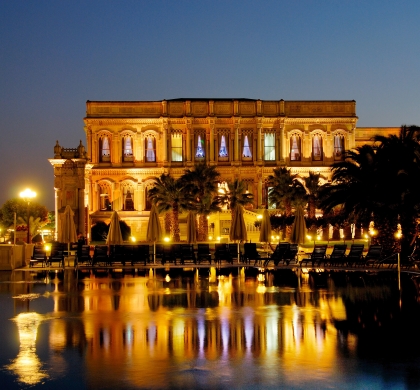
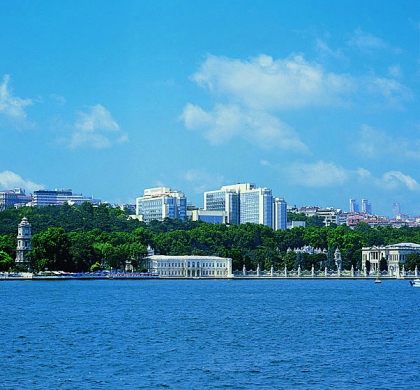
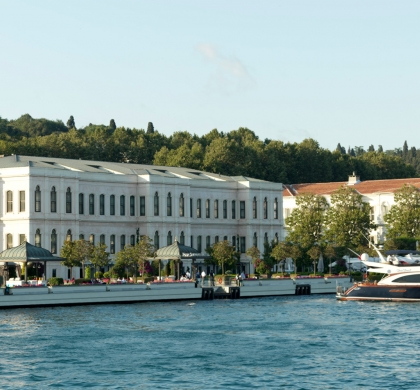
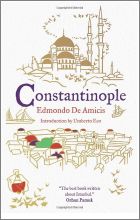
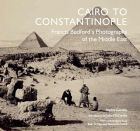
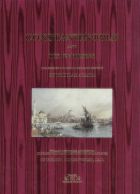
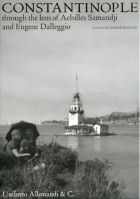
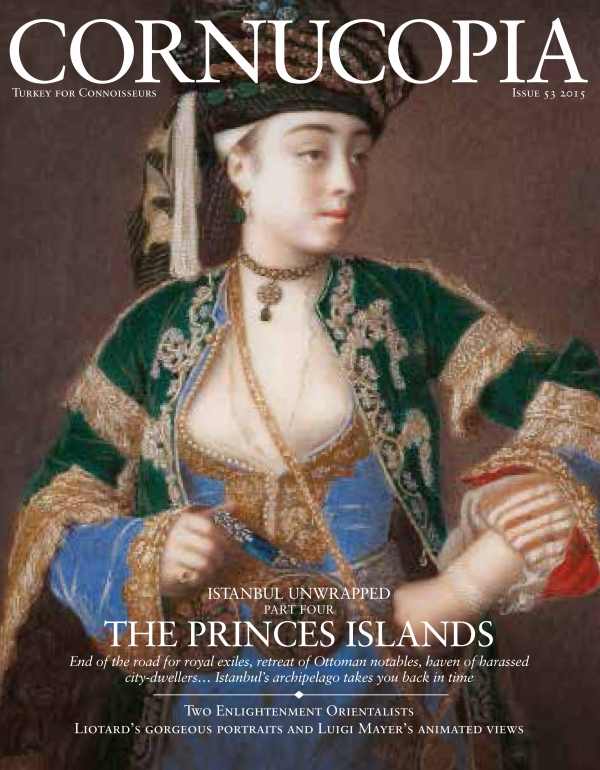
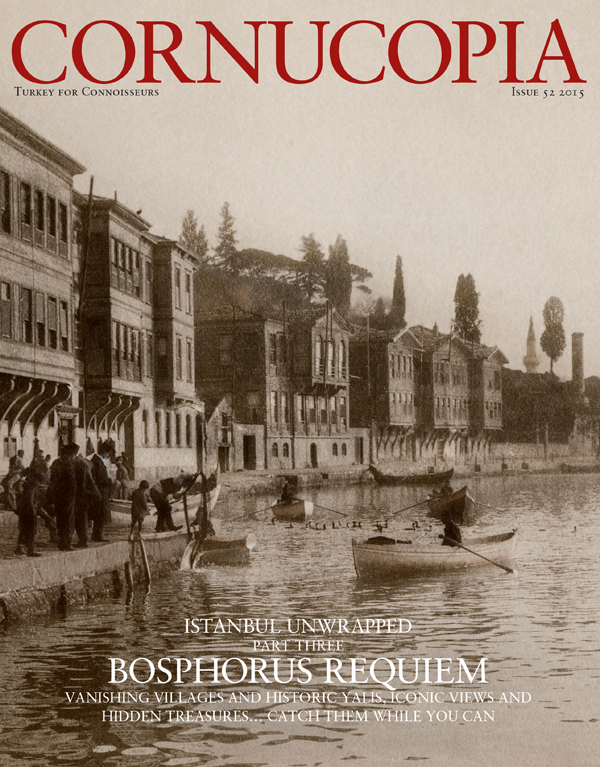
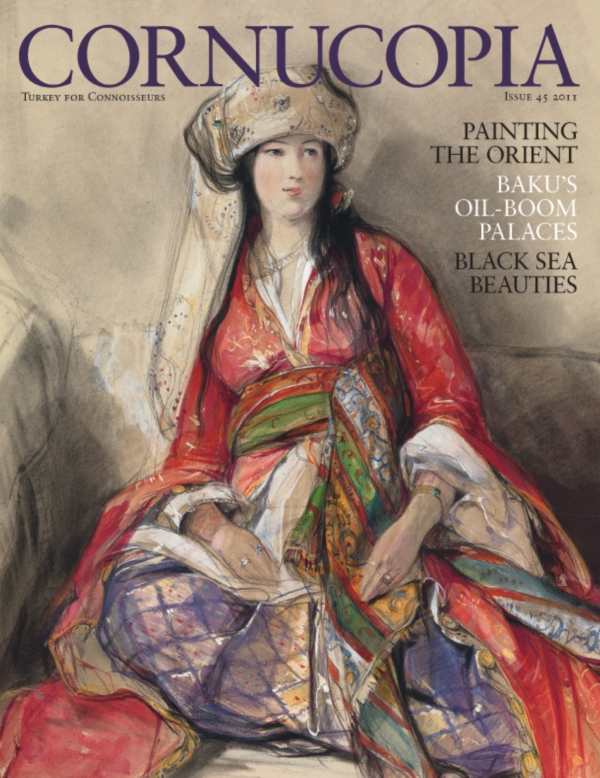

Cornucopia works in partnership with the digital publishing platform Exact Editions to offer individual and institutional subscribers unlimited access to a searchable archive of fascinating back issues and every newly published issue. The digital edition of Cornucopia is available cross-platform on web, iOS and Android and offers a comprehensive search function, allowing the title’s cultural content to be delved into at the touch of a button.
Digital Subscription: £18.99 / $18.99 (1 year)
Subscribe now